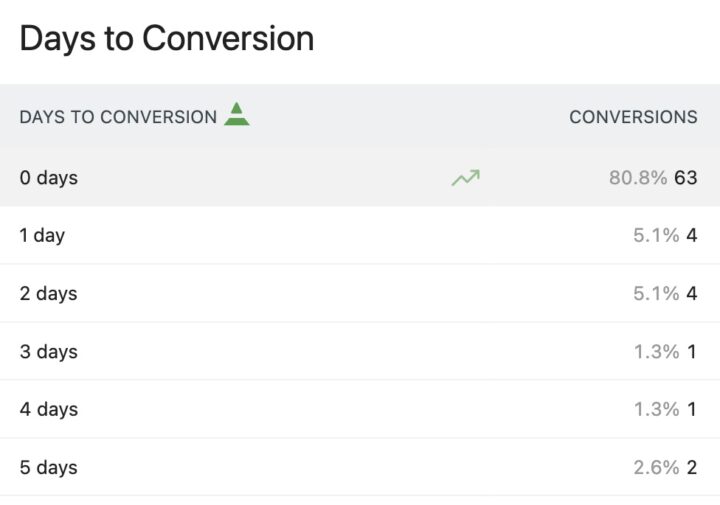The Hard Thinking: Writing Copy
The Writing Phase of our Custom Build Website process involves several labor-intensive steps — outlined in the Process section below.
Depending on the project, I (Dianna Huff) either write all new copy from scratch or revise existing content and add new content where needed.
If a company has dozens or even hundreds of products, I work with our designer, Rachel Cunliffe, to determine the best way to organize the information while ensuring an optimal user experience.
Copy that stands the test of time
Copy I created years ago for client websites remains effective and unchanged. That’s because everything I write adheres to the following principles:
- Builds trust and credibility with visitors
- Communicates key messages
- Demonstrates the company’s expertise
- Answers visitors’ unspoken questions
- Provides calls-to-action to drive lead generation
KPI: Days to Conversion
Clients who retain us for ongoing marketing see very high Visits to Conversion and Days to Conversion rates.
We closely monitor this KPI, rather than Page Views, because it tells us if the website messaging is resonating.
For example, one client sees 80% of conversions (RFQs, email, and phone calls) happen within the same day of visit. The following data chart from Matomo Analytics shows one month of conversions.

This type of demonstrable success is because we spent the time necessary to create the Messaging and Positioning Strategy in order to write copy that answers people’s unspoken questions.
If that’s the type of result you want from your website, and the type of relationship you want with your marketer, then let’s have a conversation.
Process: Thinking & Writing
In my office, I have three vintage Volkswagen Beetle ads framed and hanging on the wall. The iconic ad campaign, which ran from 1959 to 1978 (when VW stopped production), increased U.S. sales year-over-year for the distinctive vehicle.
I use the ads to remind me of three things when creating a client’s website copy:
- Tell the story succinctly; no BS or fluff
- Provide lots of detailed examples
- Keep the client’s goals top of mind
While this sounds easy, the process of telling a manufacturer’s unique story is tough work. I wrestle with ideas and how different elements and sections of the website should be organized. I write and edit, discard, and write again. Sometimes I feel steam come out my ears.
My thoughts on AI
I don’t use AI tools or farm stuff out to less experienced or cheaper freelance writers.
Effective copy — written so that prospects want to contact you — takes time and effort. It also requires a great deal of hard thinking — something you can’t delegate to others, including generative AI engines.
I’m not against AI and understand what it can do and how it can be used. I’ve also been using it for a while now due to Google Ads and their machine learning. However, it’s not very smart or very good — in fact, it’s downright bad. Even my son, who is closer to these technological changes than I, says it’s complete BS.
So, I stick to my tried and true old school method: Using my brain and the skills and expertise I’ve gleaned these 25 years.
Deliverable: MS Word Doc for You to Review
We begin with a complete draft in an MS Word document. The project fee includes two rounds of revisions, plus minor adjustments during design and for two weeks after launch.
The Word doc includes ALL the copy that will become part of your website, including:
- Navigation
- Title and meta tags for search; image alt tags
- Footer copy
- Calls-to-action
- RFQ / Contact form / Job Application form
- Open job positions
- Existing or new URLs
- All the copy for all the pages
Once you approve the copy, we move it to Google Docs for real-time revision tracking, which aids Rachel Cunliffe in the design process. It’s also incredibly efficient as we don’t have tons of email flying back and forth with changes that get lost.
When the site design is completed, we upload the copy to WordPress for you — outlined in the next phase, Design & Development.
